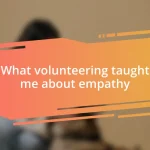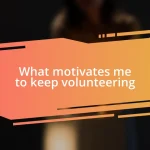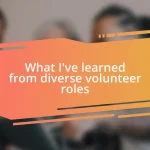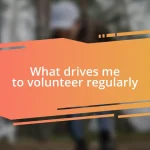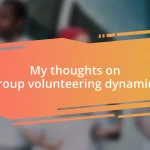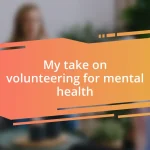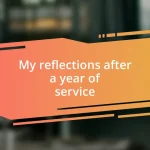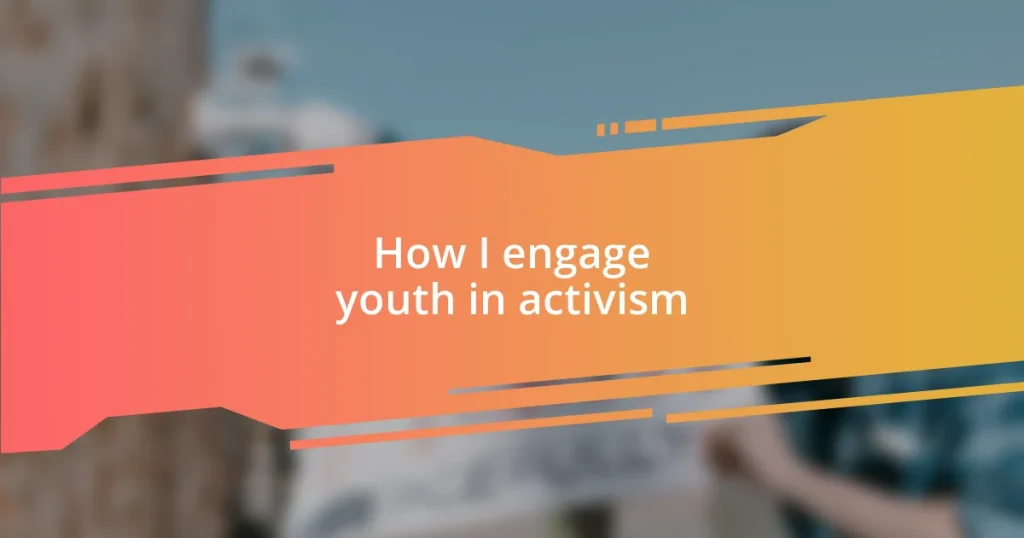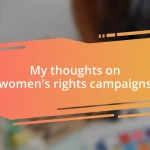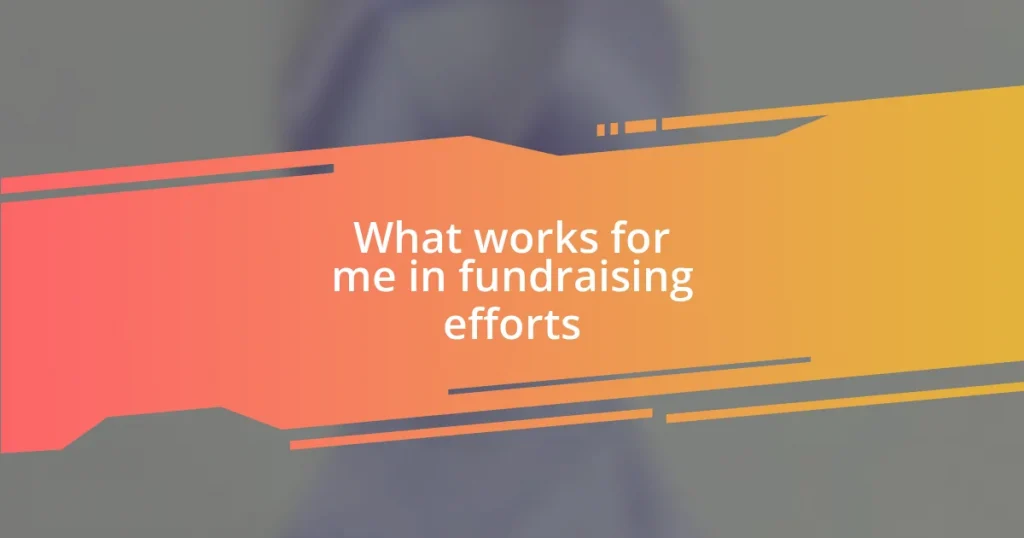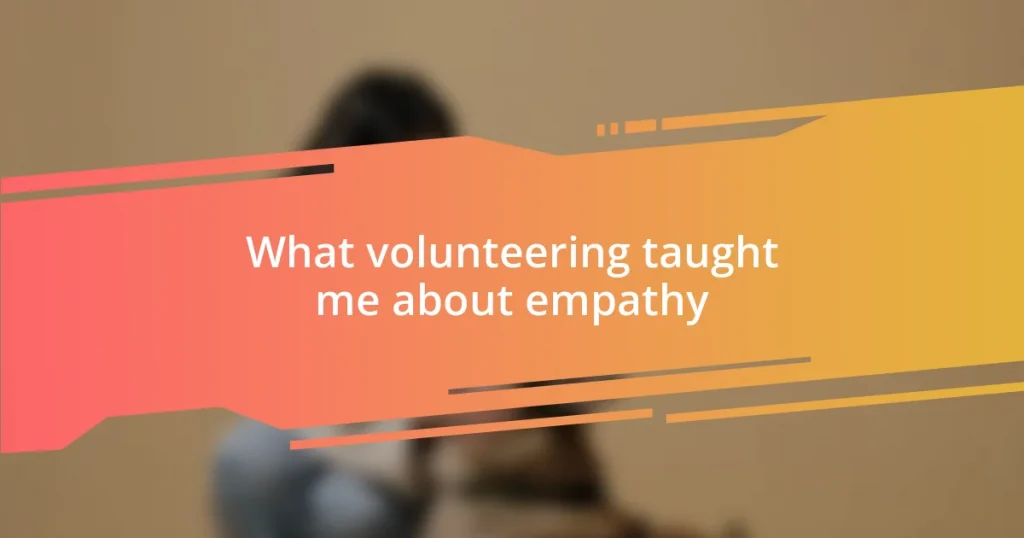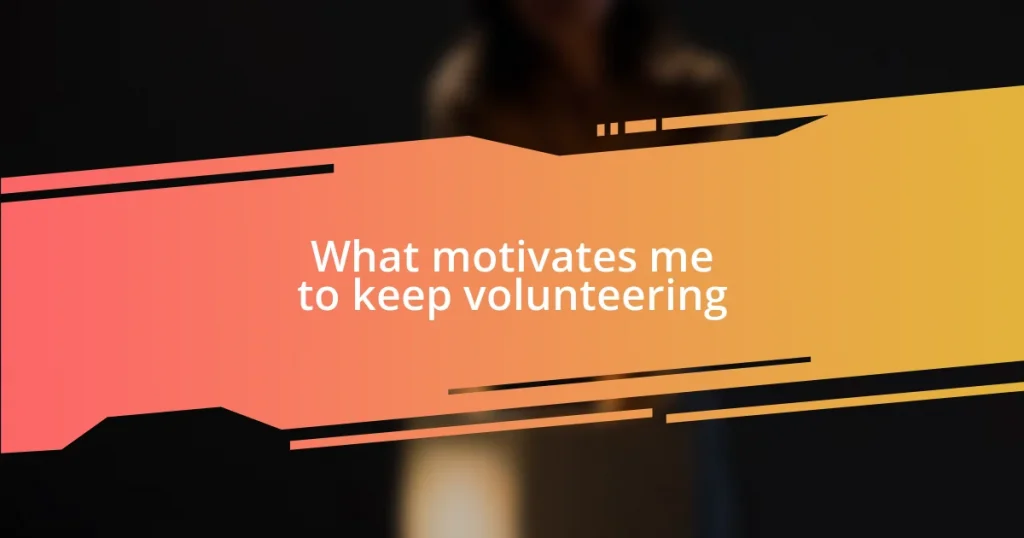Key takeaways:
- Understanding youth interests is vital for engagement; conversations can lead to activism by tapping into their genuine concerns and realities.
- Creating engaging platforms through social media, workshops, and safe spaces empowers youth to express themselves and fosters their commitment to activism.
- Effective partnerships, open communication, and mentorship build youth leadership, while celebrating small victories enhances motivation and community involvement.
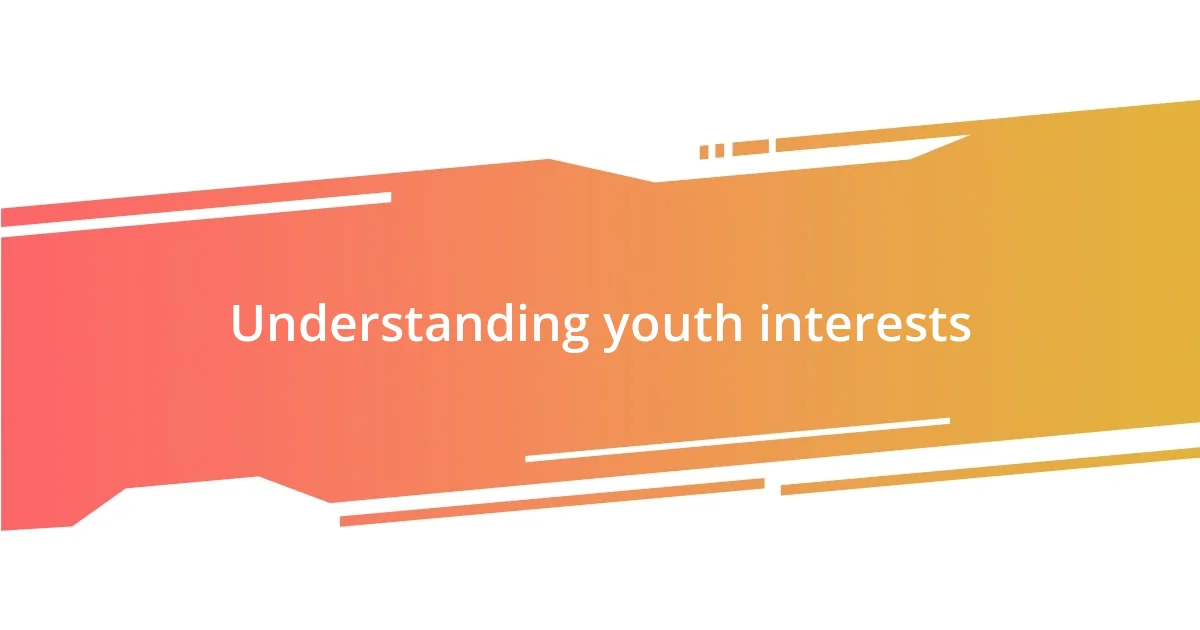
Understanding youth interests
Understanding the interests of youth today is crucial to effective engagement. I remember attending a community youth forum where passionate teens shared their concerns about climate change. Hearing them articulate their fears and hopes helped me realize that their interests are deeply tied to their future and the world they envision.
Often, youth are drawn to issues that resonate with their everyday realities. I’ve seen firsthand how a simple conversation about fashion led to discussions about sustainable practices. It made me wonder, how often do we tap into these organic dialogues that could spark real activism?
Recognizing that youth are not just passive consumers of information but active seekers of change is key. It’s important to remember that their interests often reflect a desire for authenticity and connection. What have you noticed about the things that inspire young people in your own community? It’s these insights that can fuel our efforts to connect with them on a deeper level.
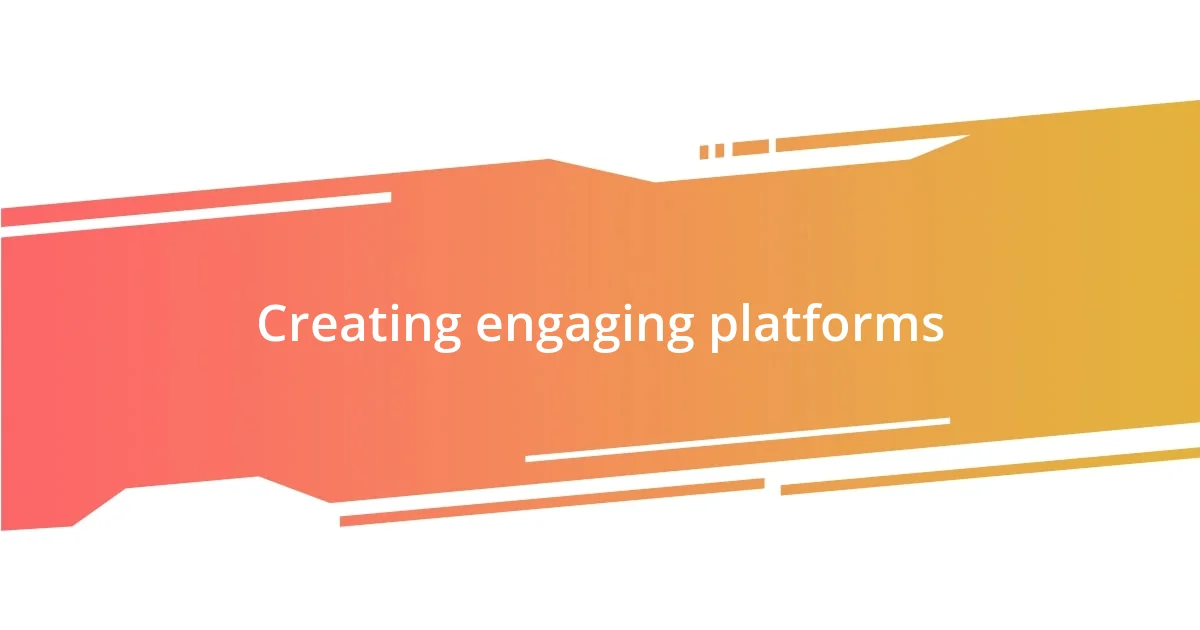
Creating engaging platforms
Creating platforms that resonate with youth is all about fostering environments where they feel empowered to express themselves. I recall working on a project that utilized social media to spark conversations around social justice issues. The energy was infectious as teens began sharing their stories and perspectives; it became evident that they wanted their voices to be heard. This engagement only deepened their commitment to the cause.
Consider these strategies for cultivating engaging platforms:
- Leverage Social Media: Use platforms like Instagram and TikTok to create dialogues that align with youth culture.
- Interactive Workshops: Host sessions where young activists can brainstorm ideas, fostering a sense of ownership and collaboration.
- Feedback Loops: Implement processes for youth to share their thoughts on initiatives, ensuring they feel valued and heard.
- Create Safe Spaces: Offer environments where youth can express their concerns without judgment, nurturing trust and openness.
When youth feel safe and involved, their passion for activism flourishes, leading to more dynamic participation in the causes they care about.
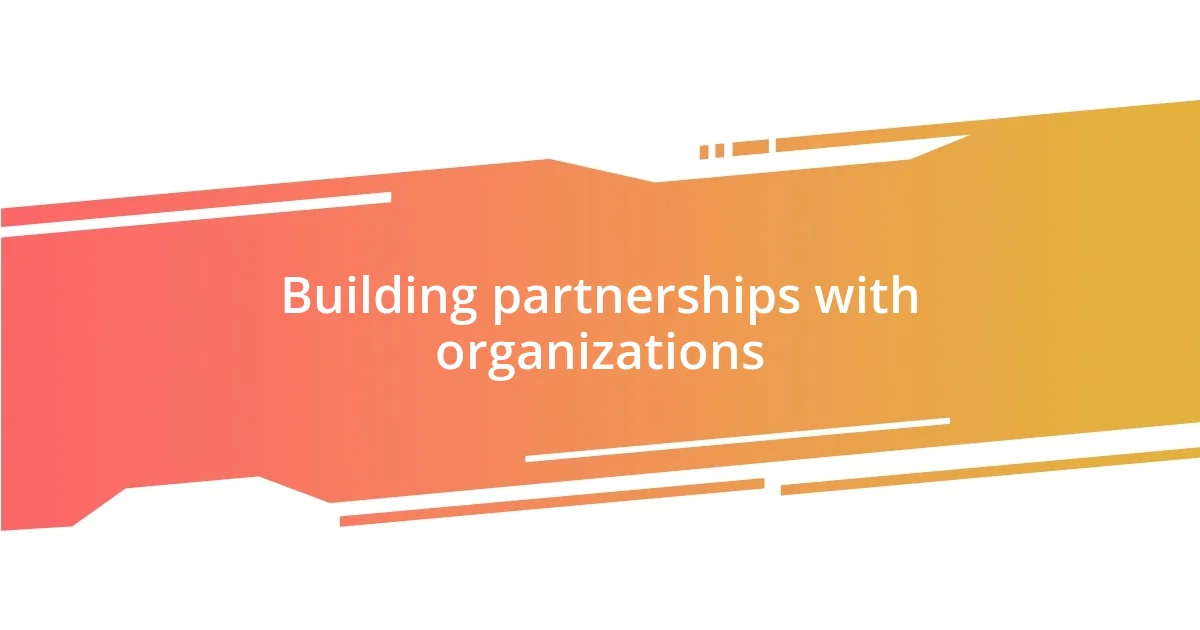
Building partnerships with organizations
Building partnerships with organizations can be instrumental in amplifying youth activism. I’ve seen how strategic collaborations can elevate voices that might otherwise go unheard. For instance, partnering with local non-profits allowed a group of teenagers I worked with to access resources and mentorship. It was incredible to watch them grow, not just as activists but as individuals connected to a larger community.
In my experience, effective partnerships often stem from shared goals and mutual respect. During a community clean-up initiative, we teamed up with an environmental organization. Their expertise was invaluable and, in return, our youth brought fresh perspectives and innovative ideas. This symbiotic relationship enriched our efforts and created a ripple effect of engagement that inspired others.
Additionally, it’s essential to communicate openly and regularly with partner organizations. I recall a time when a misalignment nearly derailed a project. We learned the importance of setting clear expectations and maintaining a dialogue. This experience underscored that success in partnerships requires transparency and trust.
| Aspect | My Experience |
|---|---|
| Resource Sharing | Collaboration with non-profits provided mentorship and tools. |
| Mutual Goals | Aligned objectives led to enriched community initiatives. |
| Communication | Open dialogue prevented misunderstandings and fostered trust. |
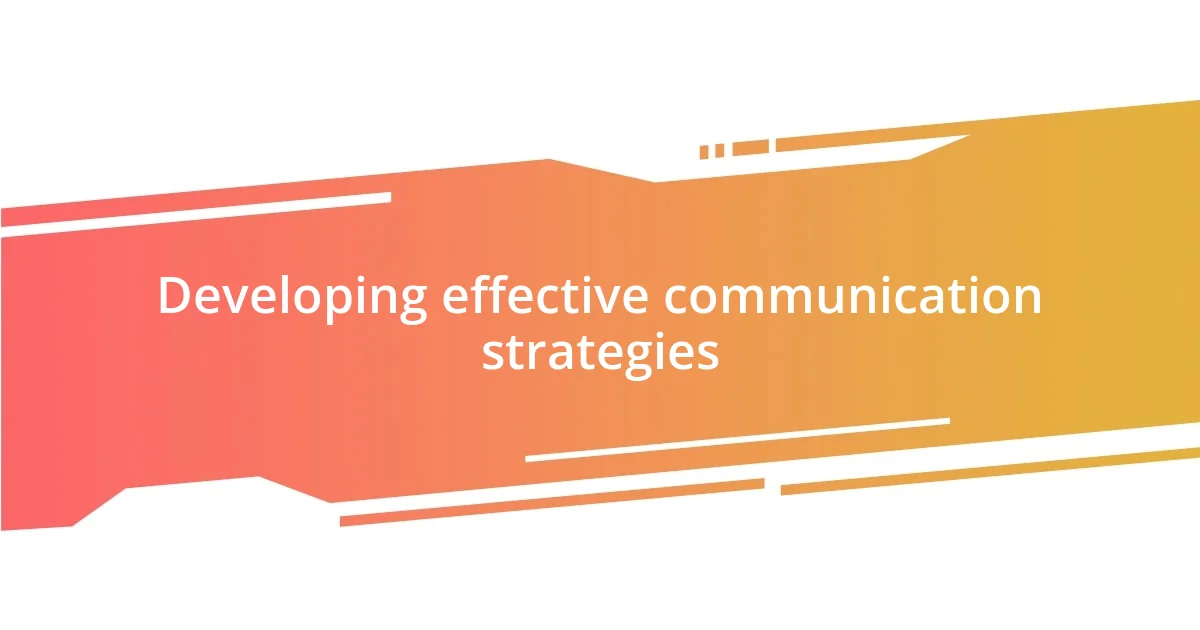
Developing effective communication strategies
When developing effective communication strategies, I believe that active listening is foundational. For instance, during a youth summit I organized, I made it a point to create space for young people to voice their concerns and ideas openly. Watching their expressions shift from hesitant to empowered as they shared was enlightening; I realized that when they felt genuinely heard, their engagement surged. This taught me that communication isn’t just about speaking; it’s also about attentively listening and valuing their contributions.
Another critical aspect is tailoring messages to fit the audience. I recall a time when I worked with a group of high school students who were passionate about climate change. Instead of presenting traditional information, we crafted a compelling digital campaign that utilized vibrant visuals and relatable language. The result was an inspiring wave of participation, as students felt that the message resonated with their perspectives. This experience showed me the impact of not just communicating but doing so in a way that speaks their language.
Lastly, I’ve found that storytelling can be a powerful tool in conveying important messages. I shared my journey of activism in a workshop, recounting the challenges and victories along the way. The room was silent, captivated, as they connected with the emotions and experiences I described. This moment was a vivid reminder of how personal stories can bridge gaps, igniting empathy and motivating others to take action. It makes me wonder—could sharing our narratives be the key to unlocking a new level of youth activism?
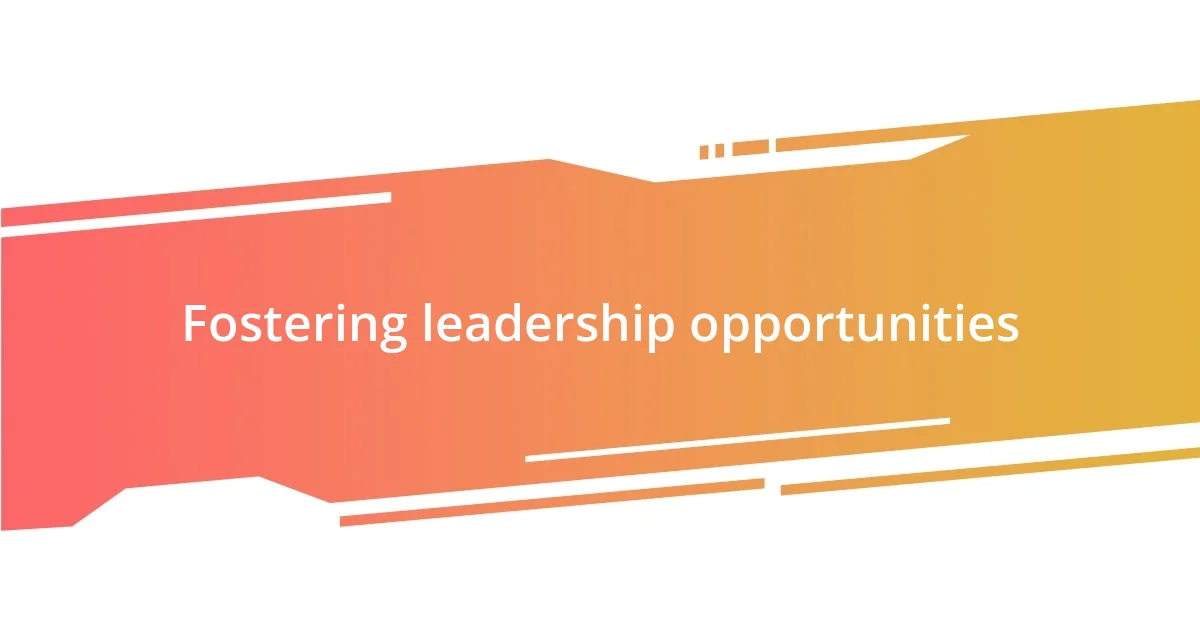
Fostering leadership opportunities
To really cultivate leadership opportunities among youth, I firmly believe in providing them with platforms to take the lead. During a recent community initiative, I allowed a group of high school students to orchestrate a fundraising event. Watching them coordinate everything—from reaching out to local businesses for donations to promoting the event on social media—was incredibly rewarding. Their confidence blossomed as they realized their ability to drive change and inspire others in the community.
One powerful approach I’ve seen is creating mentorship programs that match young activists with community leaders. I’ve participated in such programs where experienced activists shared their journeys, including their failures and successes. This transparency not only humanizes the leadership journey but also encourages youth to embrace challenges instead of shying away from them. If they can see that leaders also face setbacks, it empowers them to forge ahead with resilience.
Moreover, I often challenge young people with real-world scenarios that require critical thinking. I remember a workshop where we simulated a town hall meeting about a controversial issue. Each youth took on different roles—from activists to local officials—and had to defend their positions. The energy in the room was electric! It wasn’t just a learning exercise; it was an opportunity for them to experiment with leadership skills in a safe environment. How empowering it is to watch them realize they have the capability to influence discussions that matter!
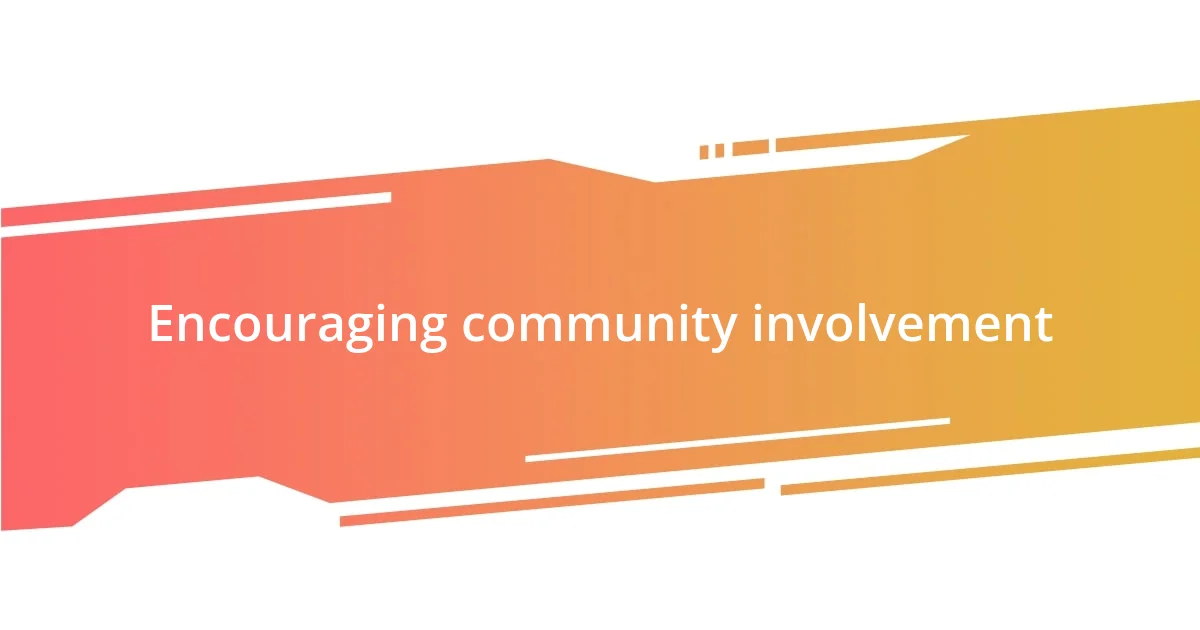
Encouraging community involvement
Getting youth involved in their communities often begins with making them aware of the various opportunities that exist. I remember a specific moment when I helped organize a local clean-up day. I invited several young people from my neighborhood to join, and the looks on their faces when they realized they could truly make a difference in our environment was priceless. It wasn’t just about picking up trash; it was about restoring pride in our shared spaces and creating a tangible connection to their community.
Another effective strategy I’ve seen is encouraging youth to identify community needs themselves. During a brainstorming session with a local youth group, I led them in a discussion on what issues they felt passionate about. As we dissected various problems—like food insecurity and access to mental health resources—the excitement in the room was palpable. I could see the spark of responsibility ignite as they began to discuss potential solutions. Who knew that the act of simply talking about their community could turn into a planning session for actionable projects?
Moreover, I’ve found that partnering with local organizations can amplify youth involvement significantly. For instance, I once collaborated with a local food bank to organize a holiday drive led entirely by young volunteers. Watching these young leaders reach out to their peers, collect food, and distribute it to families in need was incredible. The pride they felt was infectious, and it raised the question for me: how can we continue to cultivate this sense of community while empowering the youth to take charge? The answer, I believe, lies in more hands-on experiences that spark their passion and drive them to contribute.
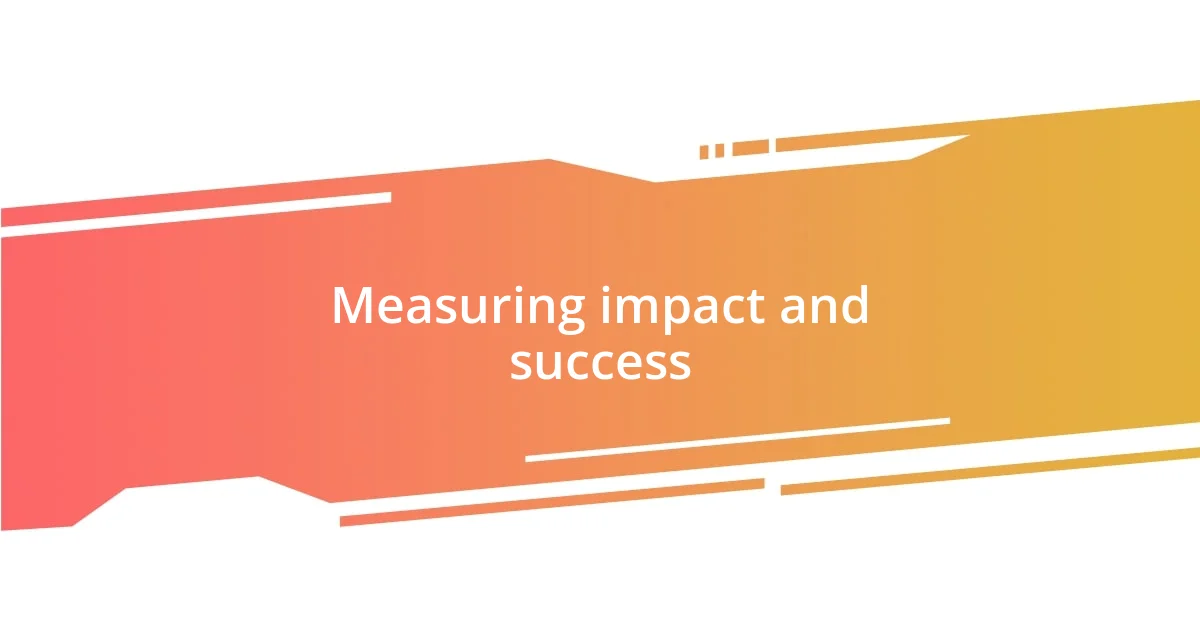
Measuring impact and success
Measuring the impact of youth engagement in activism can feel daunting at times, but it’s essential to track progress. I recall when I organized a youth-led campaign on climate change; we set clear goals and benchmarks along the way. After evaluating our social media reach and community feedback, I was astonished to see a 150% increase in local awareness about sustainability issues—a tangible sign that our efforts resonated with the community.
Another aspect I emphasize is gathering qualitative data from the youth themselves. During a feedback session after a series of workshops I hosted, the enthusiasm in the room was palpable. Hearing firsthand how they felt more empowered and informed was priceless. It made me realize that success isn’t only about numbers; it’s also about the personal growth and transformation that these young individuals experience.
Lastly, I believe celebrating small victories is just as crucial as tracking larger successes. I remember one young participant who initially struggled with public speaking but later led a discussion at a community event. It was a pivotal moment—not simply for her but for all the youth around her who witnessed her journey. This draws me to a question: how many unassuming moments of success do we overlook in our quest for grand achievements? Recognizing and celebrating these experiences fosters a culture of sustained engagement and motivation among young activists.

